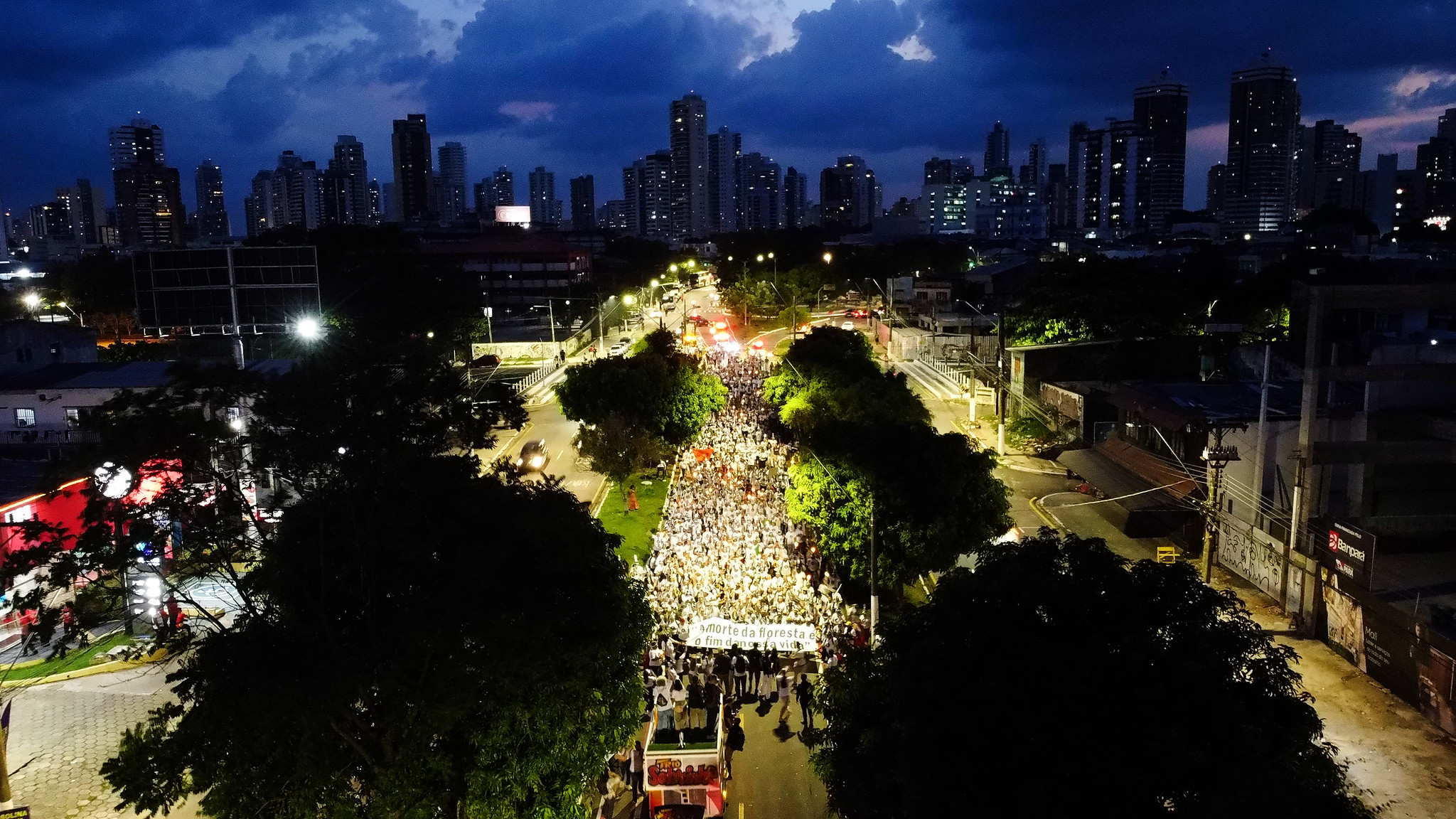
Activists during the "Porongaço" march of the Forest Peoples. The name "Porongaço" comes from the poronga, the oil lamp used by rubber tappers during their night work in the forest. Photo by Drone Alex Ferro/COP30
Belém welcomed COP30 with unforgiving Amazon heat, tropical storms loud enough to drown out microphones, and a Blue Zone that, in the first couple of days, still seemed to be adjusting and fine-tuning itself — much like the COP30 agenda itself. It all served as a reminder that this COP is not a rigid, pre-scripted conversation; it’s an evolving process shaped by the negotiating environment.
Delegates felt it right from the start: in one reported incident, a seemingly simple relocation from a stifling 40-degree meeting room to the cooler, more formal plenary space shifted the dynamic, cooling the openness to negotiate. Although others around the Blue Zone share anecdotes of warmer COPs delivering more positive outcomes.
With the U.S. and China absent at the highest levels, a serious question lies just beneath the surface – does multilateralism still work? Week one offered a clear signal – from governments, businesses, Indigenous leaders, and civil society who are determined to prove that cooperation can still deliver.
Read more
Related articles for further reading
Multilateralism on Trial
Negotiations started slowly but gathered pace mid-week. The Brazilian Presidency convened early consultations on some of the most sensitive issues: finance, trade, and the overdue NDCs — with more than 80 countries yet to submit their 2035 targets — while global projections remain between 2.6°C and 3.1°C of warming.
The urgency is unmissable. As Christine Dragisic of the National Audubon Society noted, the gap between the current national targets in updated NDCs and a safe global pathway is one of the toughest political challenges this year, and the decisions in Belém will shape our ability to protect both people and ecosystems “for generations to come.”
Adaptation is where anxiety is highest. The first text to come out of the Global Goal on Adaptation (GGA) negotiation room suggests consensus might not be as straightforward as hoped. Options being put forward by negotiators range widely – from a full negotiated text, which would require detailed and substantial consensus on a detailed framework, to the possibility of no text at all, or even a 2-year delay to resolve the matter. As Annamaria Lehoczky of Fauna & Flora warned, “The boat might not be 100% ready to set sail, but the storm is already here – and we need to start navigating it, right now,” stressing that without adopting a comprehensive indicators package now, adaptation risks being sidelined for yet another cycle.
“It is imperative to agree on indicators here in Belém that are impactful, measurable, and inclusive… enabling Indigenous and community-led adaptation solutions to thrive at scale.”
Kiryssa Kasprzyk, Director of Climate Policy, Conservation International
Finance for adaptation remains a major sticking point, with increasing calls to elevate it within the Baku–Belém Roadmap, ensuring the countries most exposed to climate impacts receive predictable support.
Article 6 also remained a prominent theme. Negotiators looked for a pragmatic balance between credibility and feasibility, with discussions touching on integrity, science-aligned standards, and how to address inconsistencies identified in early 6.2 trades — without derailing the potential of well-designed carbon markets to scale nature-based solutions. The tone was cautious but constructive: no one wants to lose a tool that, designed well, can channel finance directly to nature.
And throughout the week, nature remained in the headlines: supported largely by repercussions of the launch of the Tropical Forests Forever Facility (TFFF), now worth $5.5 billion in confirmed investments, and the New Intergovernmental Land Tenure Commitment, helping recognise and strengthen 160 million hectares of Indigenous lands, as well as the renewed $1.8 billion five-year Forest and Land Tenure Pledge.
A COP Defined by Indigenous Leadership
One of the defining features of COP30 is the unprecedented presence of Indigenous Peoples and local and traditional communities across both the Blue and Green Zones.
This may be one of the largest COPs ever, but what stands out is not the scale — it’s the shift in power and visibility. Indigenous leaders have been central in discussions on finance, governance, land rights, and nature-based solutions.
Outside the Blue Zone, protests and cultural demonstrations filled the city, with major mobilisations planned for the weekend. Zoe Quiroz Cullen from Fauna & Flora captured it well: “Every COP is really two COPs” — the negotiation rooms, and the energy on the streets — and both were shaped this week by Indigenous leadership, women and youth, and the sense that only a whole-of-society mutirão can move us forward.
“When rights of forest stewards are formally recognized and built into institutions, outcomes become stronger and more sustainable.”
Dr. Subhra Bhatacharjee, Director General, Forest Stewardship Council
Other Announcements Shaping the Week
Beyond the main stage moments, a wave of new initiatives and political signals helped define the week’s direction of travel.
The operationalization of the Loss and Damage Fund granted the Presidency a quick implementation win, issuing its first $250 million call for proposals.
The 2025 Land Gap Report provided a detailed assessment of how current NDCs fall short in addressing land-related climate transitions. Its findings were stark: a “Forest Gap” of almost 20 million hectares of annual forest loss and destruction in 2030 based on current commitments.
A global Declaration on Information Integrity underscored the political backdrop of trust-building, echoed by President Lula: “Climate change is no longer a threat of the future; it is a tragedy of the present… It is time to deliver yet another defeat to denialism.”
Brazil continued to demonstrate leadership through a suite of strategic launches. BNDES approved R$912 million in new investments for reforestation, scaling the sector’s capacity and sending a strong signal to domestic and international markets. The country also advanced work on its Country Coalition to integrate carbon markets, reinforcing its intent to shape global market rules and unlock investment for high-integrity mitigation.
Momentum around agriculture and rural transformation was strengthened by the Moore Foundation’s support for Catalytic Capital for the Agricultural Transition, a new fund designed to make land restoration economically viable for farmers and accelerate the shift toward regenerative systems.
Transport and energy debates were punctuated by the Belém 4X Pledge on Sustainable Fuels, which drew mixed reactions — welcomed by some as a pathway to accelerate decarbonization, and questioned by others who want stronger safeguards for nature and communities.
In the humanitarian arena, governments and partners endorsed a Climate and Hunger Declaration, elevating the urgency of protecting climate-vulnerable populations and strengthening food security as climate shocks intensify.
Among partner-driven initiatives, several new collaborations stood out. NatureFinance and the Government of Brazil launched The Bioeconomy Challenge, a three-year effort under the COP30 Action Agenda that operationalizes the G20 Bioeconomy Principles. The initiative aims to close gaps in metrics, finance, and markets across forests, regenerative agriculture, sociobioeconomy, finance innovation, and biotechnology — positioning Brazil as a model for inclusive, nature-positive growth.
The Mangrove Breakthrough introduced the Mangrove Catalytic Facility (MCF), a new investment-readiness platform to help intermediaries and project developers boost bankability and build high-quality pipelines aligned with global impact standards. The MCF will also support countries in designing national Mangrove Investment Platforms that embed mangrove action into long-term development strategies.
“Momentum is nothing without money: COP30 needs to deliver commitments to scale up investment in nature-based solutions, including restoring degraded wetlands worldwide to reduce emissions and buffer communities and cities against worsening climate impacts.”
Coenraad Krijger, CEO, Wetlands International
Finally, the Rockefeller Foundation announced $5.4 million for Brazil-led climate solutions, with investments aimed at strengthening regenerative ecosystems, expanding biodiversity gains, and supporting family farmers connected to public school meal systems.
Inside the Nature Hub
In the midst of it all, the Nature Hub has been one of the most dynamic spaces of the COP, where academics, civil society, investors, businesses, and governments converged to talk not only about ambition but delivery.
Business Day (13 November) featured grounded conversations and concrete models: reforestation investment pipelines, community-led bioeconomies generating livelihoods, and clearer progress on nature-related risk and disclosure. As Angela Pinhati of Natura reflected, the growing recognition that climate and nature must be addressed together is pushing companies to rethink externalities and turn environmental challenges into innovation.
Carbon Markets Day (14 November) moved quickly through themes of science, policy, integrity, equity and corporate action — mirroring the broader COP atmosphere where Article 6 talks dominated but did not overshadow the practical energy of those already implementing.
Locally Led Solutions Day (15 November) put community leaders at the centre, underscoring what practitioners often say but political processes rarely elevate: nature-based solutions are people-based solutions. Discussions highlighted Indigenous knowledge in adaptation, with voices like Kiryssa Kasprzyk of Conservation International stressing that indicators for the Global Goal on Adaptation must be inclusive and supported by finance and capacity-building that reaches local actors directly.
Across the programme, the sentiment remained consistent: the nature economy is maturing, delivery models are scaling, and nature tech and nature finance are fast becoming core pillars of climate action. Stay tuned for the week 2 schedule of events here.

Brazil’s Minister Sonia Guajajara and André Aquino, from the Ministry of Environment and Climate Change, speak at the Nature Hub alongside key Indigenous leaders shaping the TFFF and advancing direct funding for these communities.

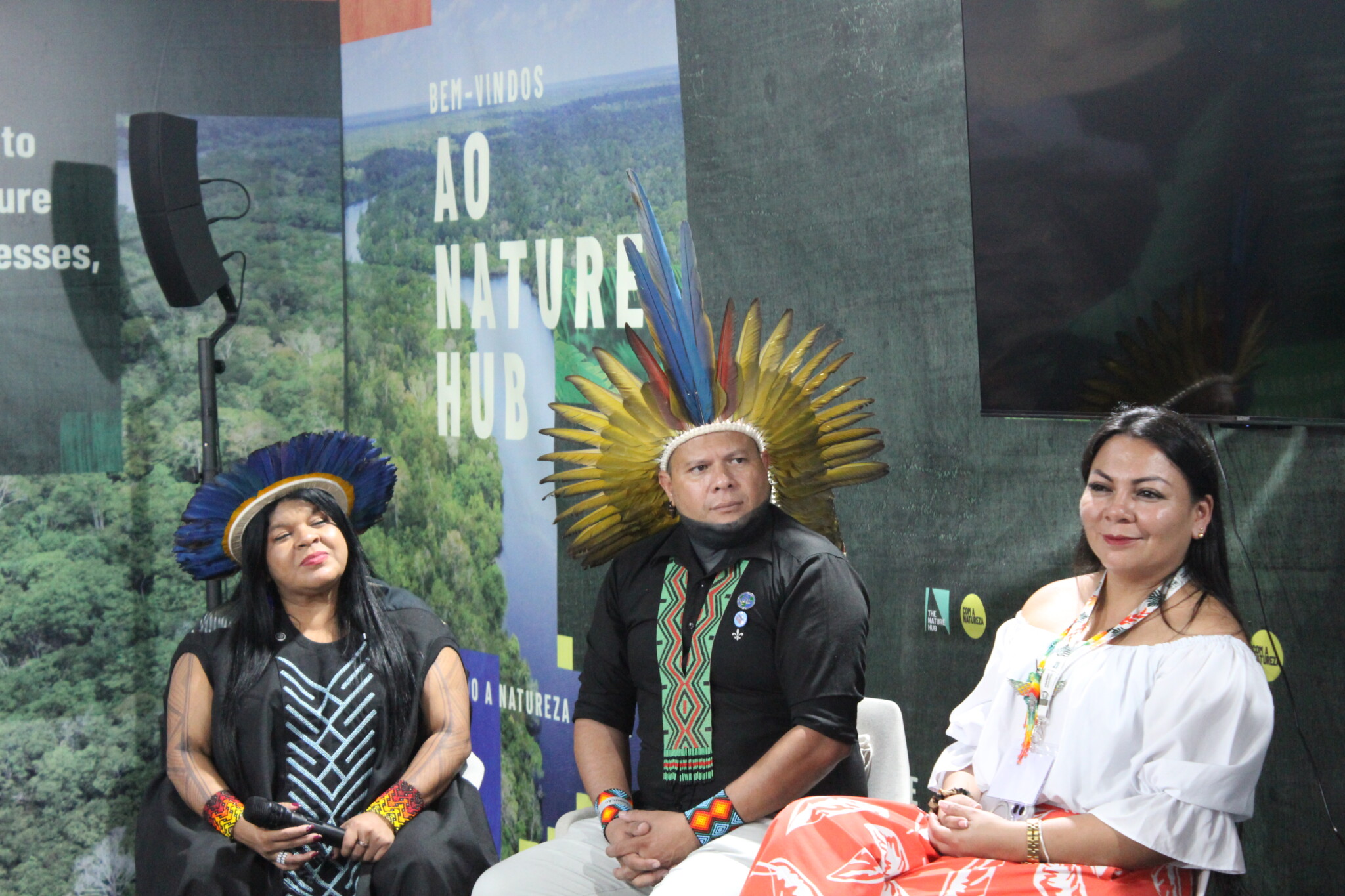
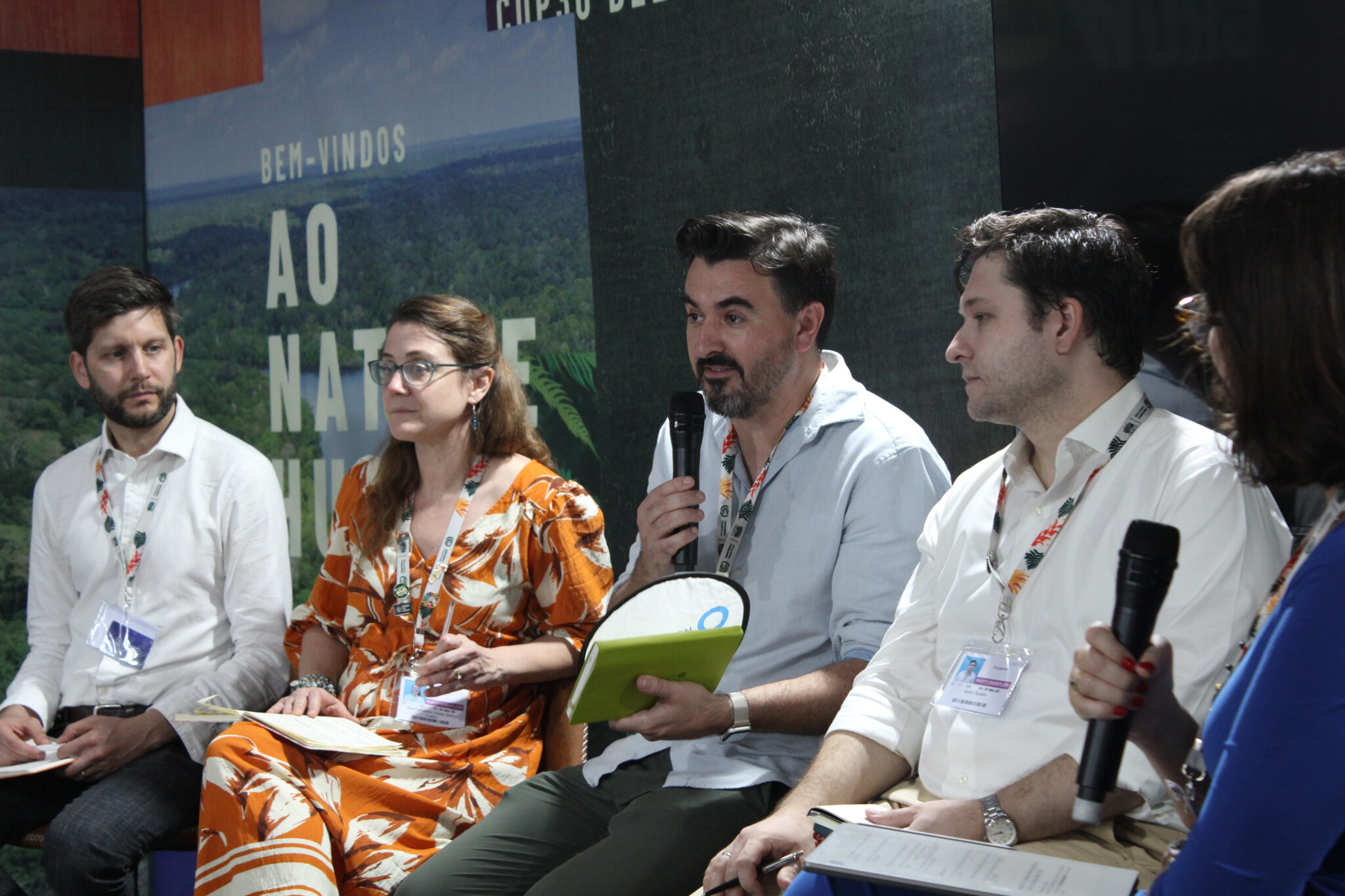
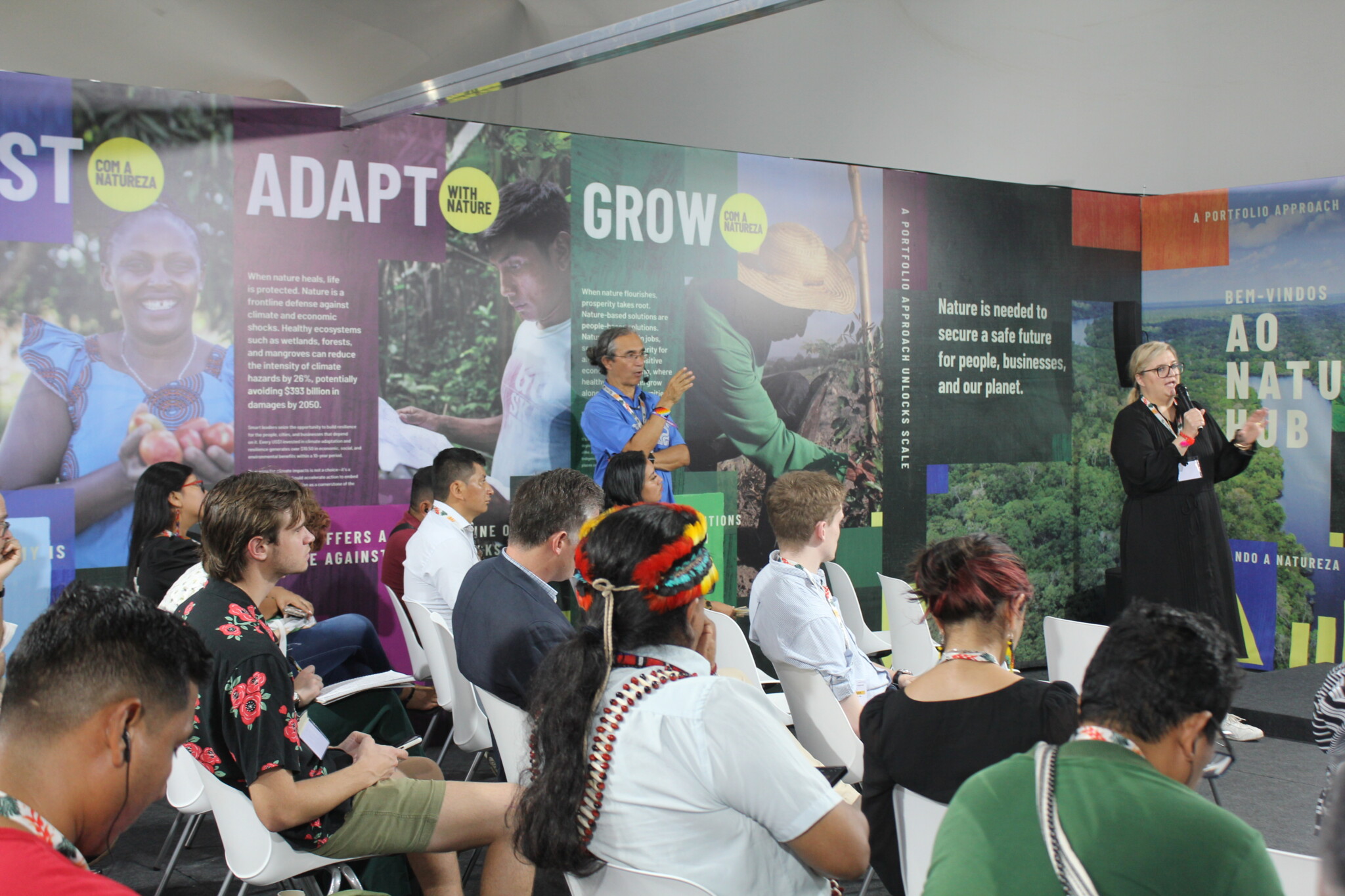
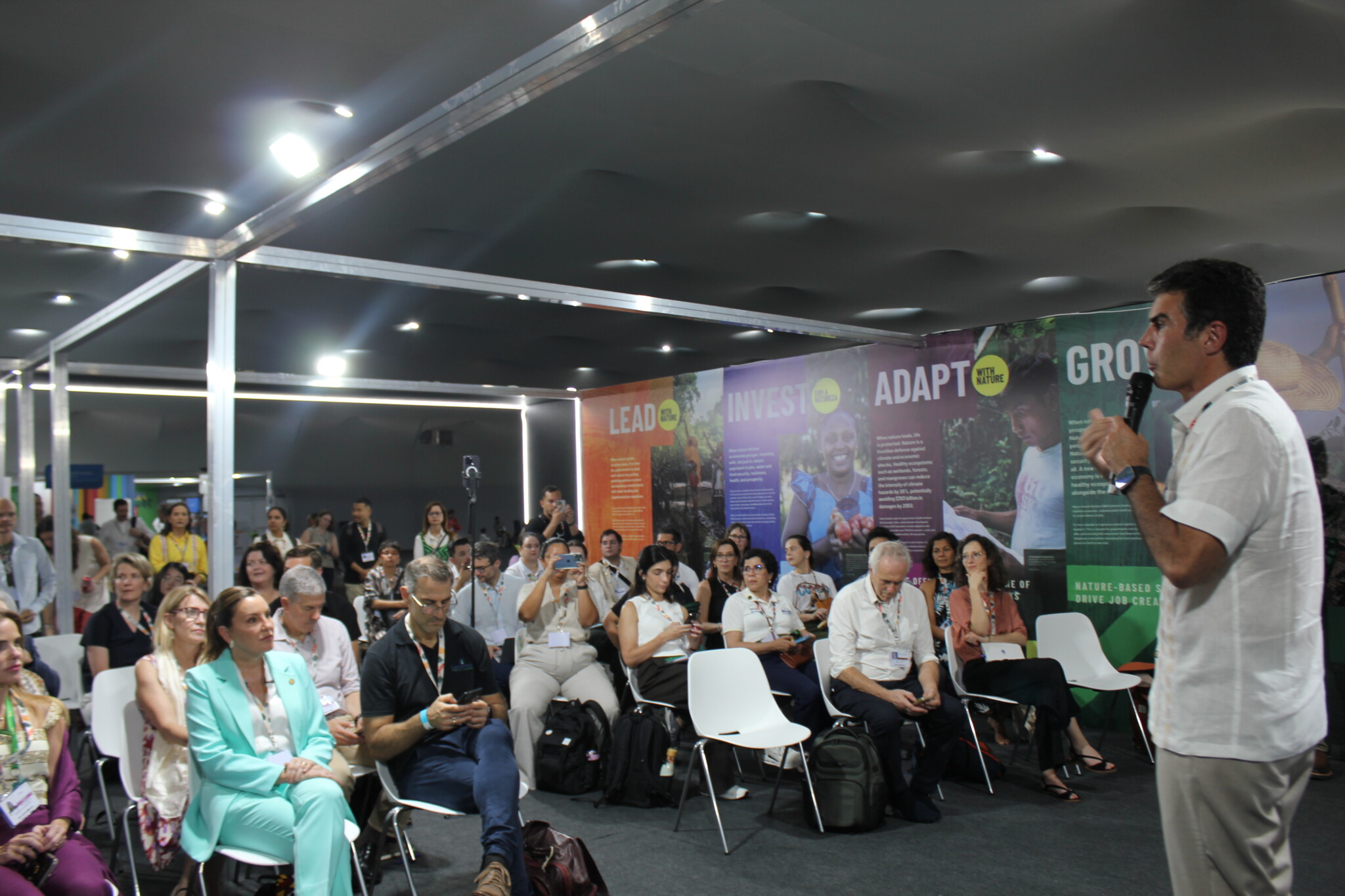
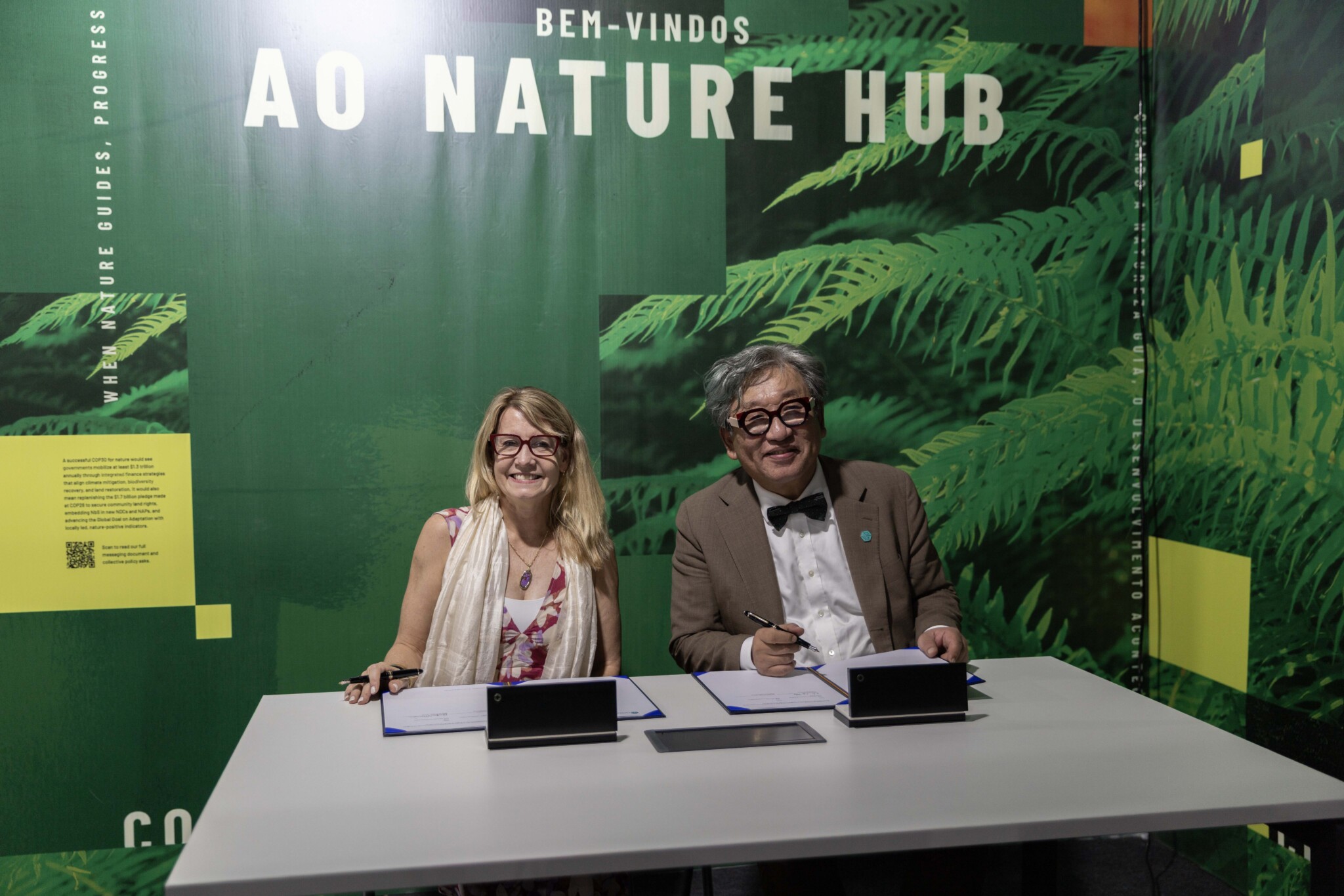

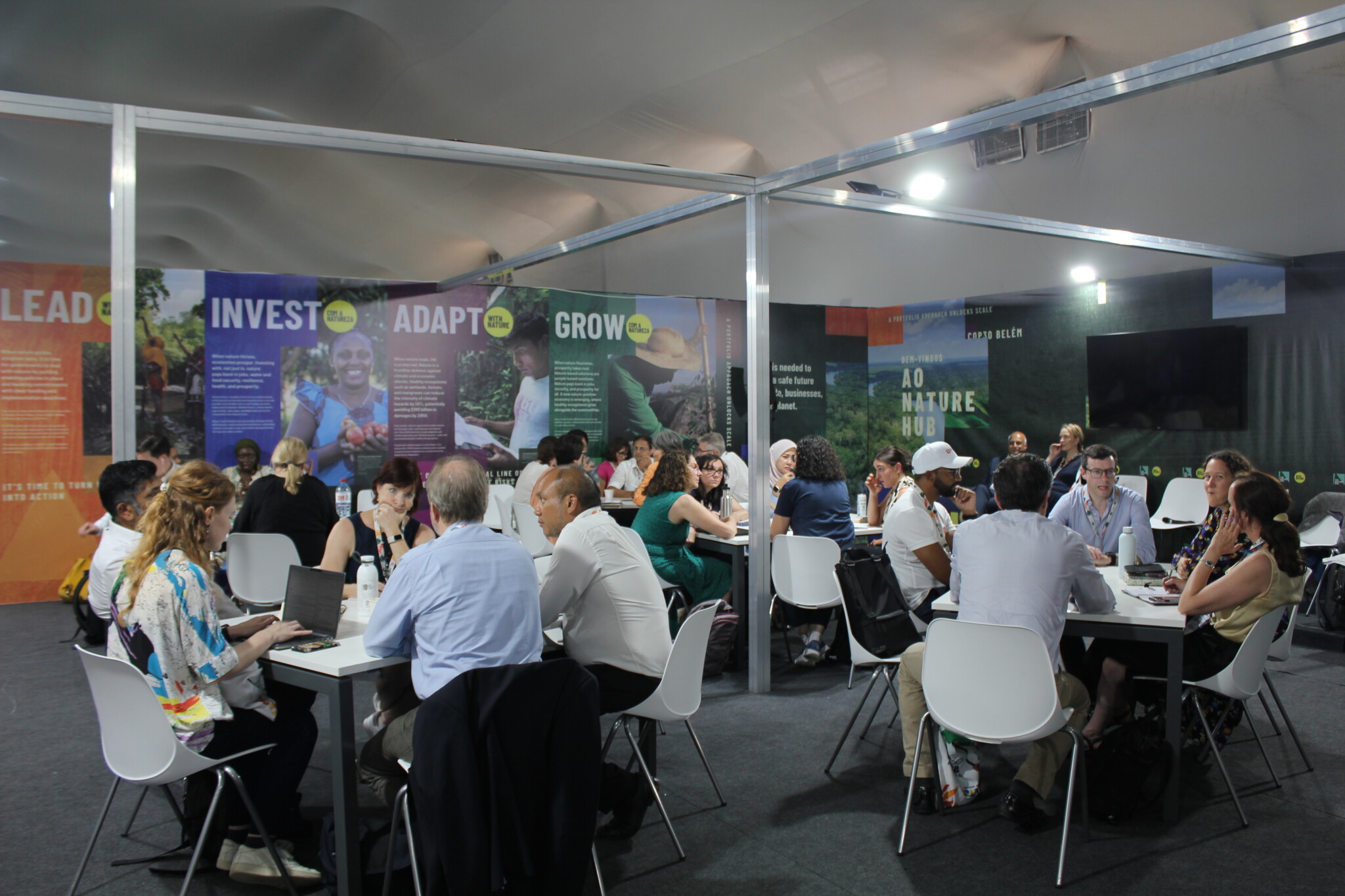

What to Expect for Week 2: Nature Isn’t Waiting, and Neither Can We
Week one in Belém showed a COP that is imperfect, occasionally chaotic, and undeniably human — but also one that is trying, sometimes fiercely, to make multilateralism work in the service of nature.
Nature has never been more visible at a UN climate summit. Indigenous representation has never been more real. And the sense of urgency — political, scientific, moral — has rarely felt stronger.
Week two will tell whether this momentum becomes outcomes. But for now, it’s clear: COP30 has already shifted the centre of gravity toward nature and the people who live in it, and the world is paying attention. But will it pay it forward?
As John Verdieck of The Nature Conservancy put it plainly: “countries want to do more… but it all costs money.”
